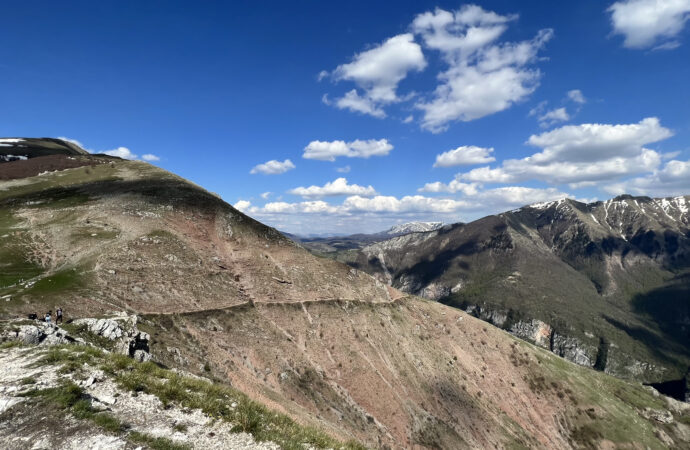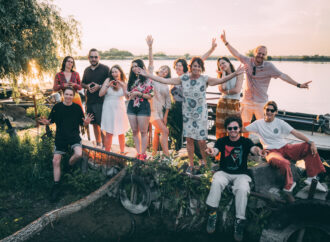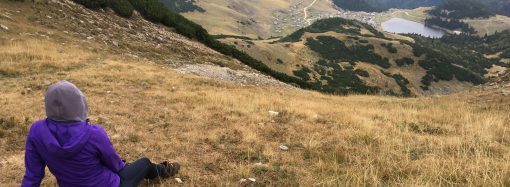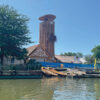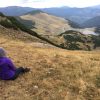Bosnia-Herzegovina – a country full of myths and wild landscapes. We visit Umoljani and Lukomir, two of the country’s most impressive mountain villages, which, nestled in the breathtaking Dinaric Alps, offer fascinating stories and deep insights into traditional life. Wafts of mist drift over Mount Bjelašnica, which lies around 40 kilometres from the Bosnian-Herzegovinian capital
Bosnia-Herzegovina – a country full of myths and wild landscapes. We visit Umoljani and Lukomir, two of the country’s most impressive mountain villages, which, nestled in the breathtaking Dinaric Alps, offer fascinating stories and deep insights into traditional life.
Wafts of mist drift over Mount Bjelašnica, which lies around 40 kilometres from the Bosnian-Herzegovinian capital Sarajevo. Umoljani at an altitude of 1333 metres is our starting point. “Ready to meet the petrified dragon here?” Faruk, my tour guide from Sarajevo, laughs. According to legend, a large dragon came here from the nearby Rakitnica Gorge to snatch sheep or even eat the villagers. When the people recognised the danger, they began to pray. God answered their prayers and turned the dragon into stone. This legend is reflected in the name of the village, which translates as The Praying Ones.
And indeed! To my left, after a bend above the village, the petrified dragon appears in the rock! Its natural formation has been created over millions of years. The head extends to the left and the body, which ends in a long tail, extends to the right.
From here, a hike of about ten kilometres takes us to the village of Lukomir through breathtaking and untouched nature. Shortly before our destination, the landscape changes and is now man-made. Wooden fences and small stone walls line the path. We pass flocks of sheep, which are typical of this area. Lukomir is the highest village in the country. And also one of the oldest. Two women sit in front of one of the historic stone houses with the typical tin roofs or wooden shingles that reach down to the ground. One is spinning wool, the other is knitting traditional woollen slippers. Both are wearing the traditional Bosnian costume. I sit down with them. Zlata, who spins wool with a steady hand, tells me about her life here, which has hardly changed in 200 years. Her movements seem like meditation to me.
Nobody knows exactly how old this idyllic village is. The current houses are up to 300 years old, but it is assumed that people first settled here in the 15th century, as there are stećci, old Bosnian medieval gravestones. They were probably shepherds from the south of the country who came here in search of lush pastures for their animals.
Just a few years ago, there was neither electricity nor running water in the houses. That has since changed. Television and mobile phones are now also part of everyday life.
Faruk is waiting for me in the cottage with the wonderful name Na krovu svijeta, which translates as On the roof of the world. Nermin and his parents give me a warm welcome. They tell me that they were the first to be allowed to buy a house here, even though they are not from here. For centuries, houses could only be sold to villagers. He and his family come from Sarajevo: “We wanted to get away from the city. The villagers, who belong to the Muslim faith, voted on us after Friday prayers – in our favour.” Nermin now works here for the whole season until the first snow falls. Then he closes the cottage, as do most of the residents. Otherwise, you run the risk of being snowed in for a few weeks or even months. The smell leads me to the kitchen, which could be straight out of a Brothers Grimm fairy tale. With a hearty laugh, Nermin’s mum takes our steaming hot pita out of the oven – pies filled with feta and spinach. They are served with fresh salad, yoghurt and her homemade mountain herb tea.
The sun is leaning towards the horizon. It is still light. Faruk leads me to a rocky promontory. To the left, the terrain descends steeply to the gorge of the River Raritnica. We can hear its roar from where we are. Or are we hearing the breath of a dragon that is said to live in a cave down here? According to legend, it rules over the precious water. If people do not treat the water with respect, it is said to cause periods of drought. Even today, the older villagers use the water with gratitude so as not to arouse the wrath of the dragon that watches over their precious water.
From the highest point, I experience a breathtaking sunset. The endless canyons glow a dark orange colour. As we walk back, we have to illuminate the narrow path with the torches on our smartphones to avoid slipping. We walk to the medieval gravestones. It is already cold at 1,455 metres above sea level. The light colour of the natural stone glows in the dark. It has become quiet in the village, which is now in a deep sleep. Even the stars shine brighter here. Mars, Jupiter and Saturn join them and then, so clearly that it startles me, the Milky Way appears. It seems to dance. I lean against the old gravestones so as not to lose my balance. Time and space no longer exist. I seem to be connected to the universe!
Lukomir is a combination of two words – Luka Mira, which translates as ‘harbour of peace’.” And that’s exactly how I feel when I go to bed. Nermin’s hut also rents out rooms. In the morning, the smell from the kitchen wakes me up. Nermin’s mum has prepared a hearty breakfast for us: savoury pancakes served with homemade sour cream.
Strengthened, we set off on our way back to Umoljani. We now walk along the Rakitnica gorge. And there is a reason for this. Shortly before we reach the village, a plateau with a fascinating winding watercourse stretches out in front of me. “According to legend, the ‘Studeni Potok’ (‘Icy Stream’) was created by the tail of the evil dragon as it flew towards the village,” explains Faruk as we walk to its banks to have our picnic.
Bosnia-Herzegovina is a country full of magic and authenticity. While the legend of Umoljani symbolises courage and faith, that of Lukomir reveals a deep connection between our ancestors and nature and a belief in the mystical and supernatural. This is an impressive demonstration of how closely nature, history and legends are interwoven – and how important it is to never lose touch with nature.
Mirella Sidro,
Sarajevo


